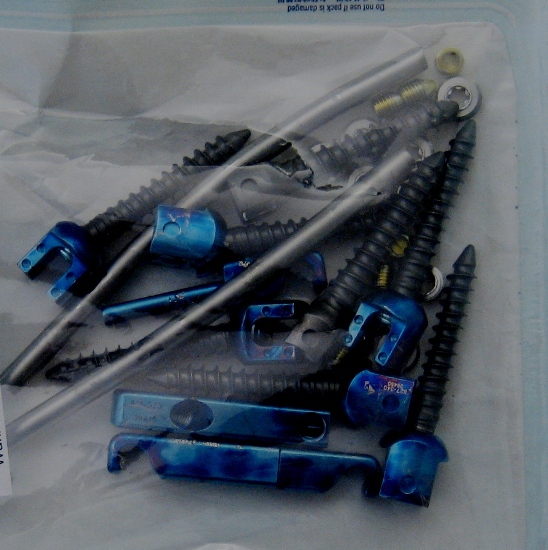I'm in Straubing now with a client who has been severly disabled for years because of severe back pain when he stands, followed by the onset of leg pain and weakness if he's up and about for more than just a few minutes. It's OK with him if I share some of his story.. "If it will help someone else, please do it", he says.
I won't tell his story now, I'll leave that to him later, but I do want to relate an important issue. Dr. Bertagnoli believed that the top of the fusion hardware was impinging on his facets and that the disc(s) above the fusion may be painful. We were disappointed that the discography at both levels above the fusion was negative. No smoking gun there. However, the facet injections at L2-3 were VERY effective... almost eliminating his pain for more than 2 hours. Unfortunately, removing large posterior constructs like a 3-level lumbar fusion is a big ordeal, so they are highly motivated to do as little surgery as possible. We were hoping that Dr. Bertagnoli would be able to remove just the top 2 screws and part of the rods above the second set of screws. Remember that all the fusion hardware is unnecessary once fusion is complete and this patient did have good fusion. He was disappointed that some of the hardware would remain, but glad that he'd have a less invasive surgery. There are so many trade-offs, but this seemed to be a good one.
The surgery was very interesting. Upon exposing the upper levels, it was very clear that Dr. Bertagnoli was right. While you couldn't see such great detail on imaging, direct viewing showed that the hardware was indeed impinging the facets above and the facets had responded with a great deal of osteophytic bone growth... rendering the facets mostly immobile and deformed. I've observed this type of surgery before, but this was the best view I've had. I learned a great deal about what we are talking about when we talk about collateral damage from invasive surgeries.
There are MANY different fusion systems out there. Like all things spine, there are compromises everywhere. The hardware has to be VERY sturdy or it will break. The 6mm titanium rods require a substantial bolt cutter to provide enough leverage to cut the rods and very sturdy jaws to take such a high load. If the surrounding tissues are pliable, relatively small access will povide enough room. If not... a larger opening must be made. Because of the design of the hardware, you cannot remove one set of screws without being able to cut or remove the rods. When creating wider and wider access, there comes a point where it is more reasonable to remove everything than it is to cut the rods. During the surgery, I asked, "if you had to do a multi level posterior fusion today, would you use a modular system so if revision is necessary, you can remove just the components you need to remove?" The answer was, "ABSOLUTELY! With a modular system, you can remove components with muscle splitting techniques. You don't need to open everything like this."
We won't know the outcome of this surgery for some time. It may be the case that the lower hardware was a significant part of the patient's pain, so it was actually better to remove everything. We hope that the balance between pain relief and collateral damage leaves the patient with substantial improvement. Seeing him walking around at less than 24 hours post-op gives me great hope. Still, it will be a tough recovery and only time will tell.
We see a lot of different designs that represent different balances. Less invasive here... less revisable there. When considering ADR, we talk about "what if I have to have it removed?" We should ask the same question when considering fusion. There are many different systems out there and many different motivations for surgeons to use one system over another.
Do your homework... make informed decision....
All the best,
Mark
